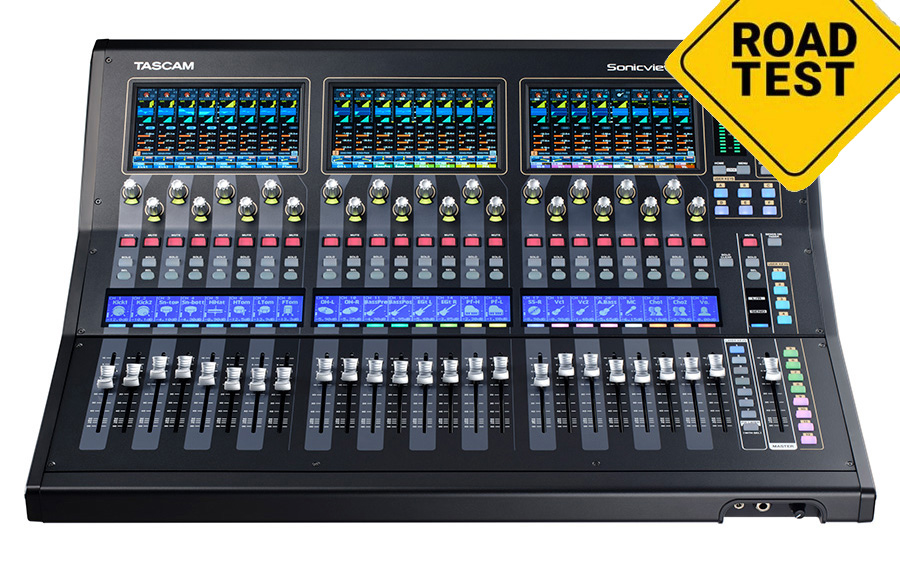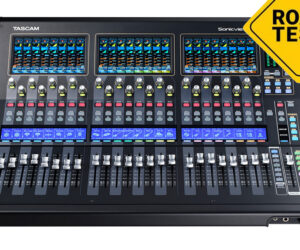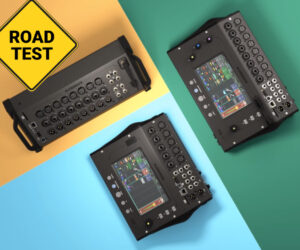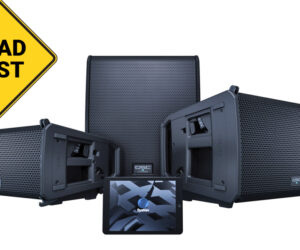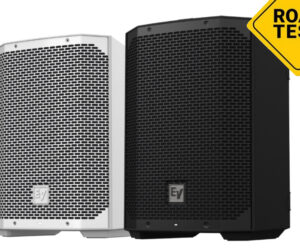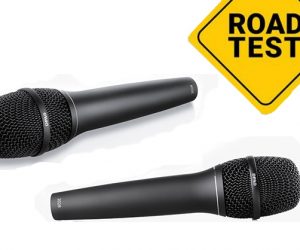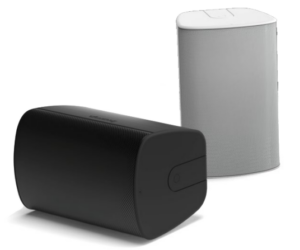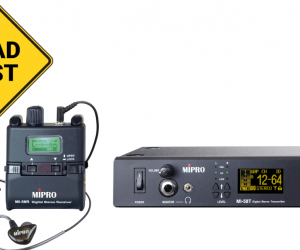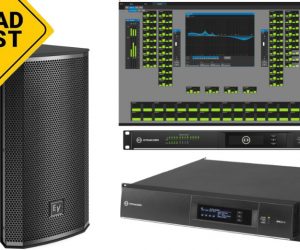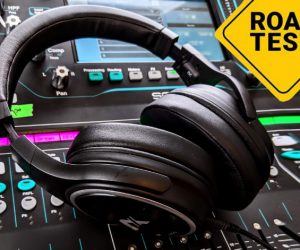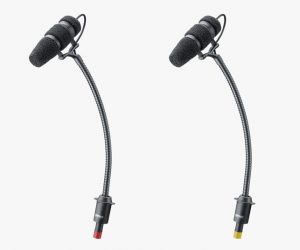The recently released Sonicview 16XP and Sonicview 24XP recording mixers from TASCAM incorporate a new multi-screen user interface that’s designed to allow easy operation and control of all system parameters using customizable touch screens, user-definable buttons, and control software for applications that include live and installed sound, recording studios and broadcast.
Both mixers incorporate a 64-in/64-out Dante interface, 32-bit/96 kHz multi-channel USB audio interface, built-in 32-track multi-track SD recording (standard in the U.S. market only as “XP” model), Class 1 mic preamplifiers, and numerous I/O options. The 96 kHz, 54-bit FPGA mixing engine’s float-point processing makes it possible to change levels without compromising resolution, with stated latency of 0.51 milliseconds even in analog-to-analog connections.
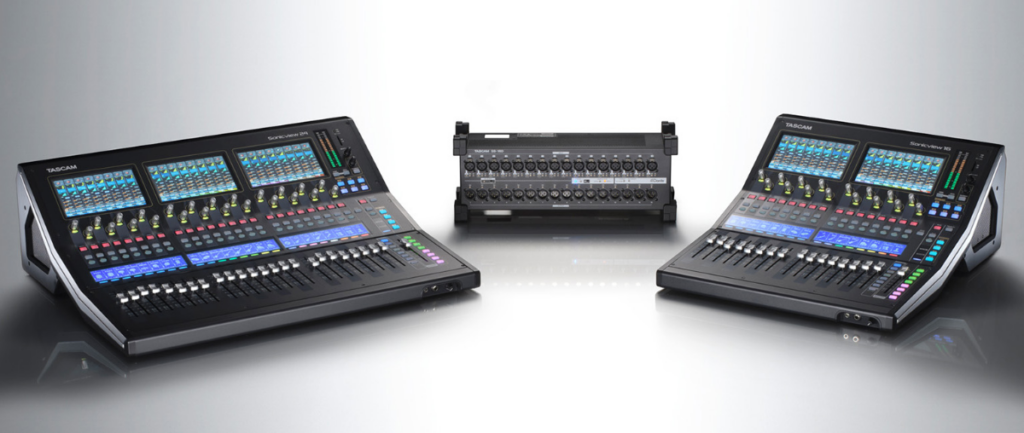
The platform offers multiple ways to record. In addition to the integrated audio interface, they come with a preinstalled IF-MTR32 integrated multi-track recording card (U.S. market only as “XP” model), enabling the capture of 32 channels directly to an SDXC card. In regions other than the U.S., the optional IF-MTR32 can be installed into one of the two open expansion slots to enable 32-channel multi-track recording. The SD recorder supports simultaneous 32-channel punch-in/punch-out, pre-record, auto-record, and markers.
The two models differ in frame size and the number of physical inputs, mic preamps, faders, and touch screens. The 16XP offers 16 physical input channels with 100 mm motorized faders and TASCAM’s Class 1 HDIA (High-Definition Instrumentation Architecture) microphone preamps, while the 24XP provides 24 physical input channels with 100 mm motorized faders and the Class 1 HDIA microphone preamps.
Internally, the architecture of the two models is the same, with internal 44 input channels (40 mono channels and 2 stereo channels), 22 flex output buses, and the L/R main bus with 31-band graphic EQ. The 16XP offers motorized channel faders in two banks of eight while the 24XP offers motorized channel faders in three banks of eight.
Both offer a motorized stereo fader for the main bus. Above each bank of channel faders is a color touch panel that allows the user to view entire mixer channels or get down to details, controlling each parameter via a fingertip. For visual feedback, the 16XP provides two 7-inch touch panels while the 24XP offers three.
And, the mixers are Dante enabled, as is the companion SB-16D 16-in/16-output stage box that provides many connection options. Optional cards include MADI, AES/EBU, Dante and analog outputs.

Added Touches
At first look, the primary difference between the models is two-fold – real estate and view. The 24 has more faders and, more importantly, an extra touch panel. How this plays out is one of the things I’ll dig into through this evaluation.
The mixers come with a stylus that’s magnetized, which helps to reduce the opportunity for misplacement (the console is made out of metal, which shouldn’t be a big deal but, well, nowadays…) The stylus is a very useful tool; it helps navigate the touch screens and, if you’re anything like me, reduces the error of clumsy fingers.
There are 18 user keys, all assignable, so the signal can be routed many different ways. For a novice user, this could be somewhat overwhelming, but fortunately TASCAM has some tutorials available that I highly recommend if you’re new to digital mixing.
The touchscreen/windows provide a lot of information. One of the really neat features is how you can enable the two/three screens to do different channels/buses/mixes or have the two/three (depending on the model) give detailed information on the selected channel. One helpful suggestion was to “follow the colors.” For example, when the high-pass filter moves its position on the screen, the actuator knob color moves with it (to a different knob). Knowing this helped a lot.
TASCAM calls the view screen method VIEW (Visual Interactive Ergonomic Workflow), and it’s a patented technology. It’s very nice to have your channel laid out over three screens if you need to get deep focus. Sonicview offers 22 mix outs, each with its own graphic EQ (parametric is also an option) and dynamics processing.

As with most mixers of its category, Sonicview has individual EQ, dynamics control and a very colorful and useful scribble strip function. Of note for broadcast clients, the dynamics section provides some really neat options, including Dynamic Expansion in the gate module and a Ducker in the compressor module. The editing functions are deep and impressive, and the company has already new firmware upgrades at least twice since I received the review sample.
Throw-And-Go
I used the Sonicview 24XP on a live broadcast at the community radio station where I’ve been a volunteer for a couple of decades. We had three bands on a Saturday night and it was throw-and-go. How would the mixer work from a dead start? Let’s find out.
We unboxed both the stagebox and the mixer and set them up quickly. We didn’t have any Ethercon lying around the station so we just hooked up with good ol’ Cat-5e. Worked like a charm. We set up the microphones, plugged in and went for it.
There were two powered wedges, so we just made a couple of mixes and then sent the L/R to the air room console. It took about 15 minutes from the unboxing to a good sense of how to use it.
So, you’re probably asking, how’d it sound? As noted, Sonicview uses internal 54(!) bit float internal processing with a 96 kHz sample rate. The mic preamps are stellar, very clear, and the low latency response is as close to analog as you’ll find at this price point. The broadcast engineer was pleased, the bands were pleased, I was pleased. All in all, a good night.

This is a mixing platform for both live sound, and with its 32-track ability, recording applications. I expect to see Sonicview showing up at a lot of clubs, radio stations and houses of worship over the next couple of years, and I can also see the platform doing well in the corporate AV market. A quick note for the rental market: a full factory reset took less than a minute. That was nice.
In the early 1990s, I worked at a TASCAM dealer. At the time, major competitors – at least on the retail level – were companies like Fostex and Alesis, with the ADAT a big hit for both home and pro studio markets. Rarely being first to market, TASCAM tended to observe how other companies did what they did and the strengths and weakness of their competition’s products, and in this case, it eventually led to the highly successful DA-88.
That same approach has been taken with the Sonicview 16XP and 24XP mixers, and it will be very interesting to watch the impact they have over the next couple of years and to see how the competition responds.
U.S. MAP: 16XP – $5,999; 24XP – $6,999; SB-16D stage box – $2,499
Go here for more specifics on the TASCAM Sonicview 16XP and 24XP mixers.


